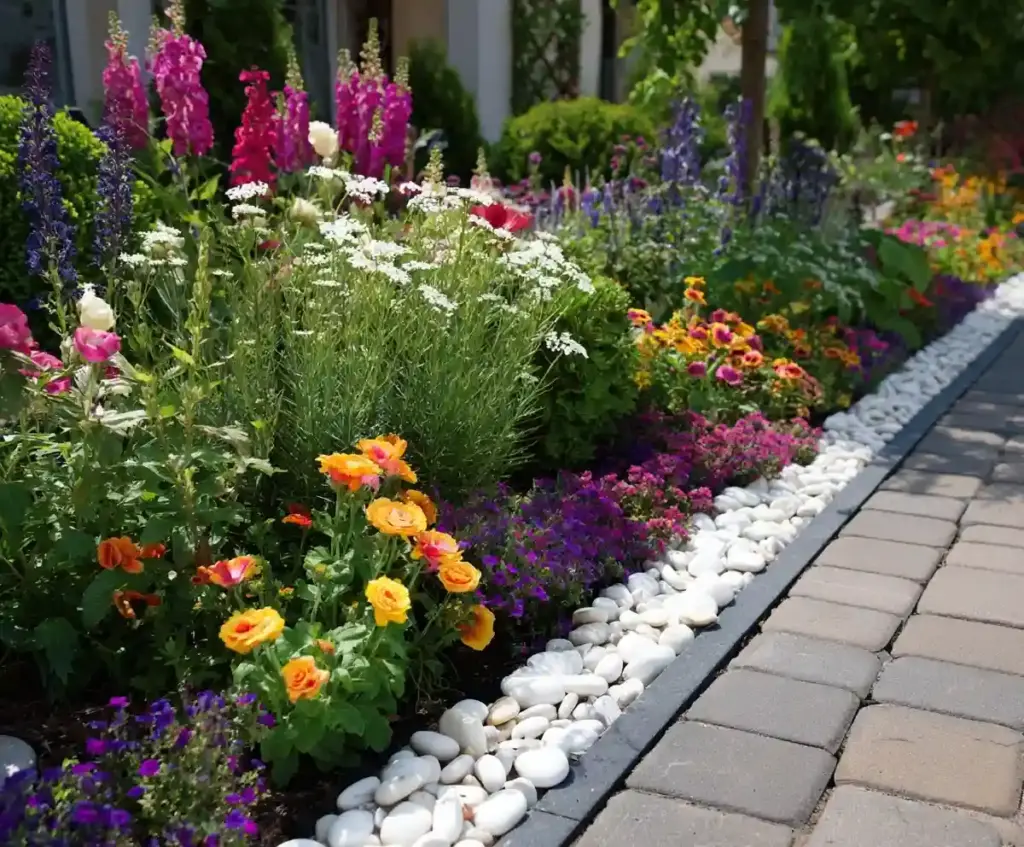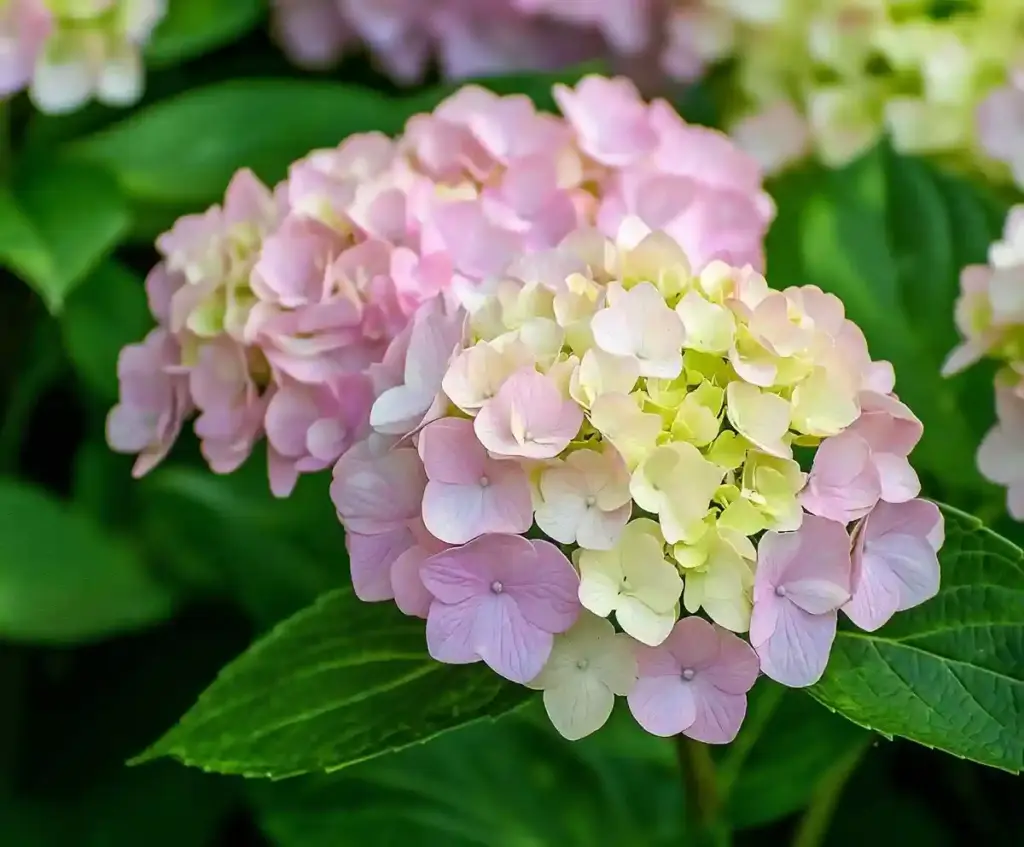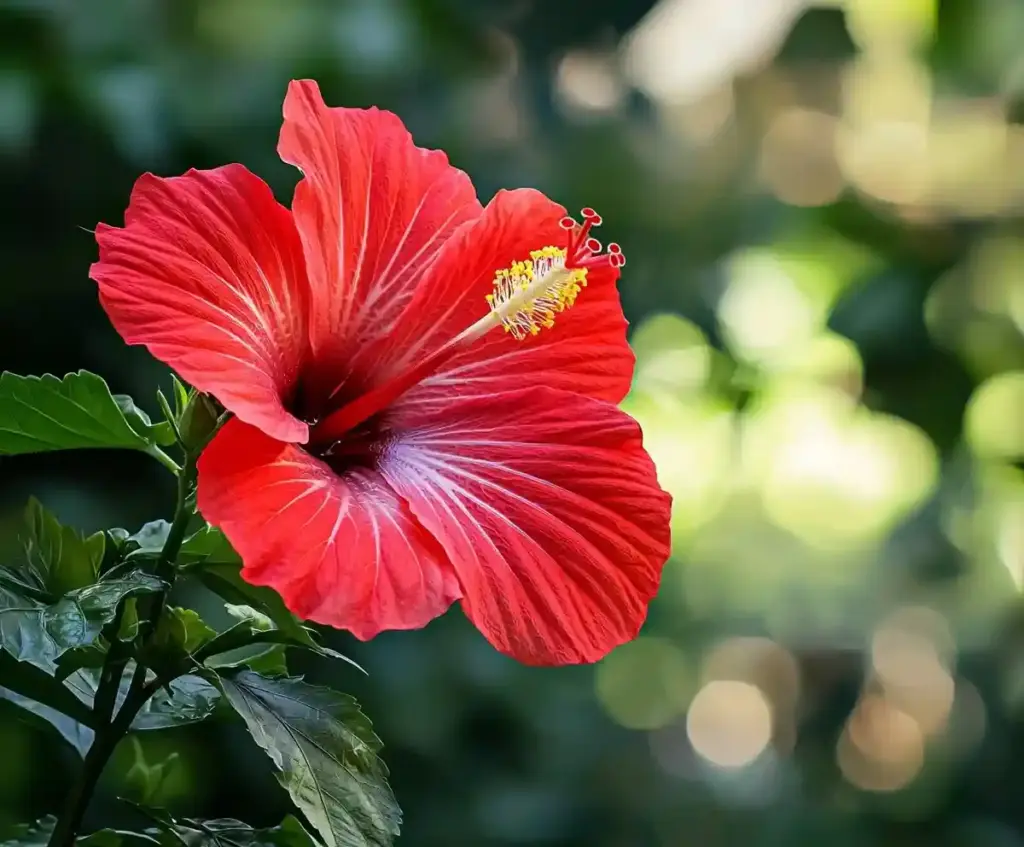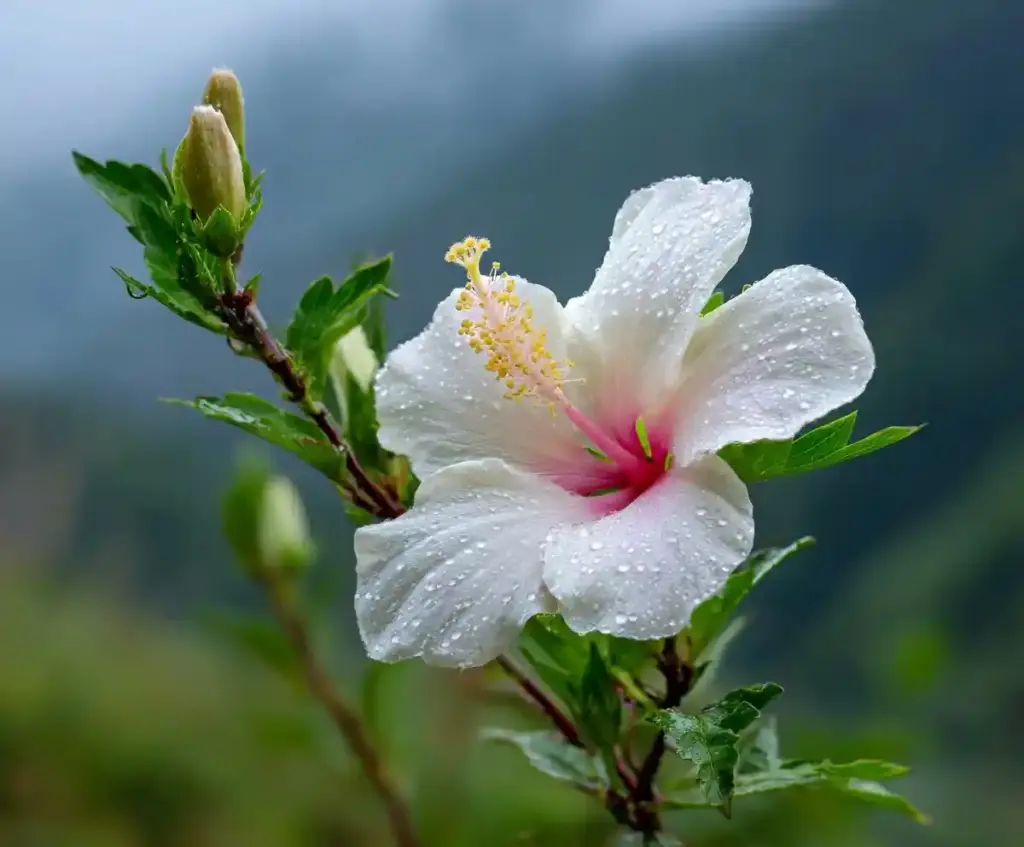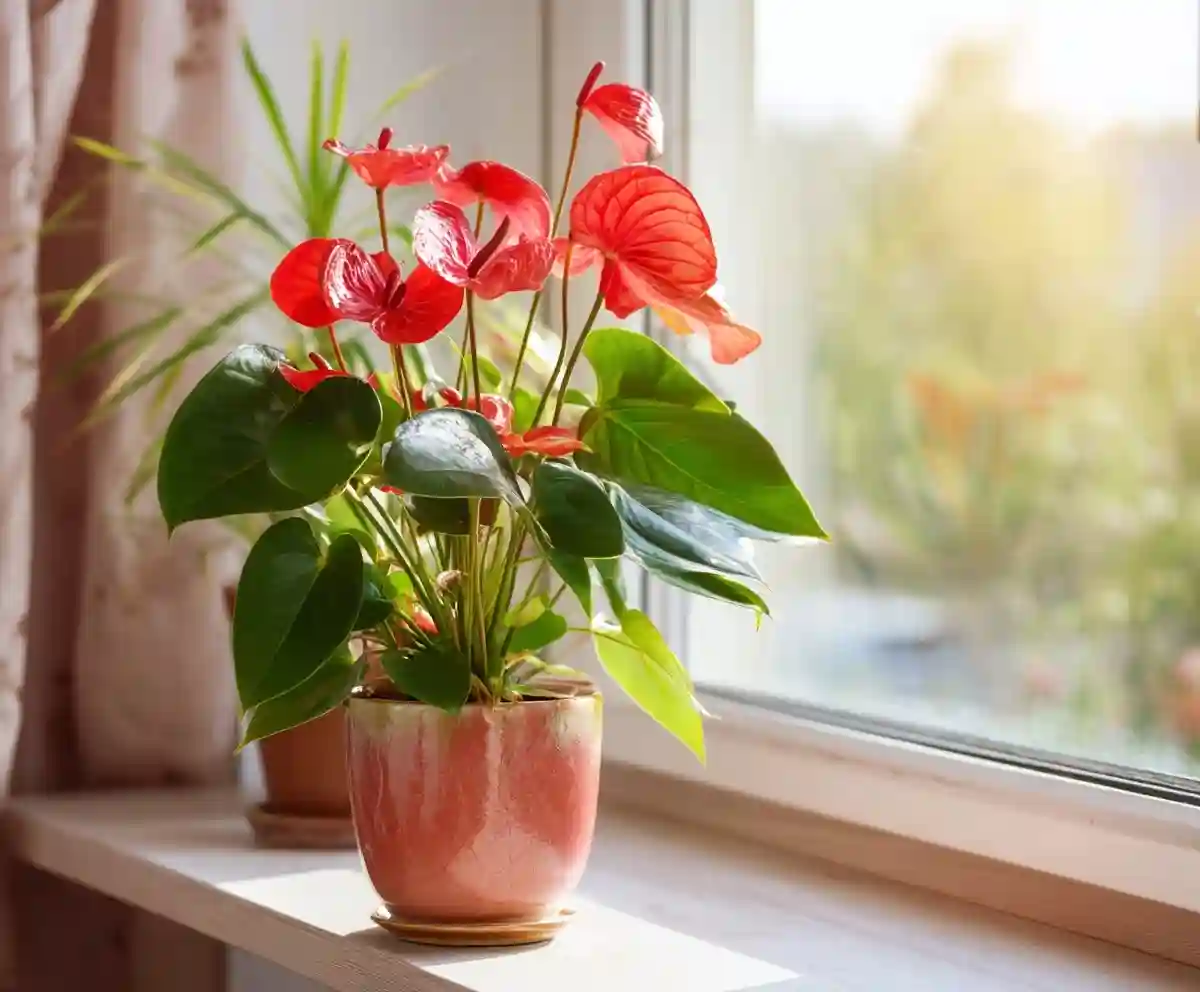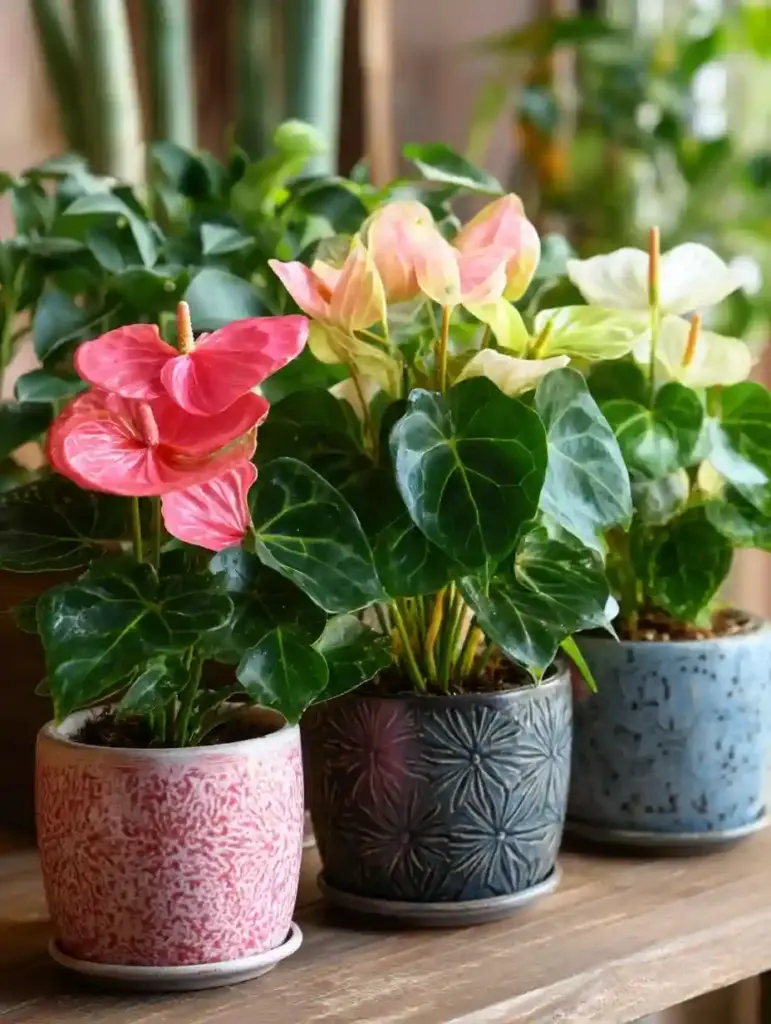Anthurium care is easier than most people think, and with just a bit of attention, you can enjoy the bold, tropical beauty of the flamingo plant all year round. Known for its heart-shaped, glossy leaves and vibrant, waxy blooms, this plant adds a splash of color to any indoor space. If you’re looking for a resilient, low-maintenance houseplant that thrives with a little humidity and the right light, the anthurium is a perfect pick. Whether you’re a beginner or a seasoned plant lover, giving your anthurium the right conditions will reward you with long-lasting flowers and lush, healthy growth.
Table of Contents
About the Flamingo Lily Plant
The flamingo plant, often called flamingo flower or laceleaf, is a tropical beauty officially known as Anthurium andraeanum. Native to Central and South America, it’s part of the arum family and is beloved for its striking foliage and brightly colored spathes—those glossy, petal-like structures that many people mistake for the flower itself.
These vibrant plants come in shades of red, pink, white, and even purple, and each bloom can last for weeks. They’re typically grown as indoor plants in most climates but can thrive outdoors in USDA zones 10–12.
What makes the flamingo lily especially appealing is its architectural look. With large, dark green leaves and showy flowers perched atop tall stems, it adds both height and drama to your plant collection. The best part? With proper anthurium care, it’s more forgiving than its exotic looks might suggest.
Why We Love Flamingo Flower
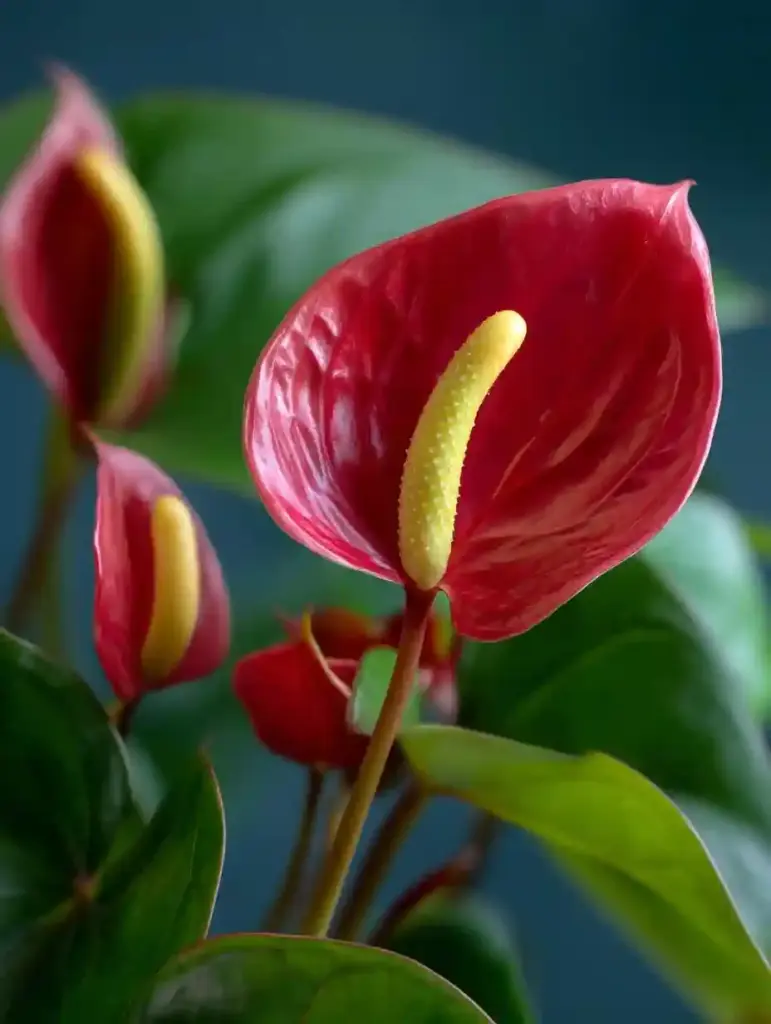
There are plenty of reasons to fall in love with the flamingo flower, especially once you realize how simple anthurium care can be. Beyond its visual charm, this plant offers practical benefits and thrives even with modest attention.
Here’s why plant lovers can’t get enough of it:
🌸 Vibrant, Long-Lasting Blooms
Anthuriums are famous for their eye-catching flowers that stay in bloom for several weeks—and sometimes months. With their waxy texture and bold colors, these blooms instantly brighten any room.
💧 Low-Maintenance and Beginner-Friendly
You don’t need to be a plant expert to succeed with flamingo flowers. They adapt well to indoor environments and are quite resilient. As long as you get the basics of anthurium care right—like proper light, humidity, and watering—they’ll flourish.
🌿 Air-Purifying Properties
These plants don’t just look good—they work hard, too. Anthuriums help remove common household toxins from the air, improving indoor air quality. This makes them a stylish and healthy addition to your space.
🌞 Year-Round Beauty
Unlike many flowering houseplants, anthuriums can produce flowers continuously under the right conditions. With consistent care, you won’t have to wait long for another round of blooms.
🪴 Versatility in Placement
Whether placed on a shelf, desk, or plant stand, flamingo flowers fit into almost any décor. You can even grow them outside in warm climates or move them outdoors during summer months—just keep them out of direct sunlight.
Their beauty, resilience, and benefits make flamingo plants a must-have in any indoor jungle. Ready to make yours thrive?
Anthurium Care Made Easy
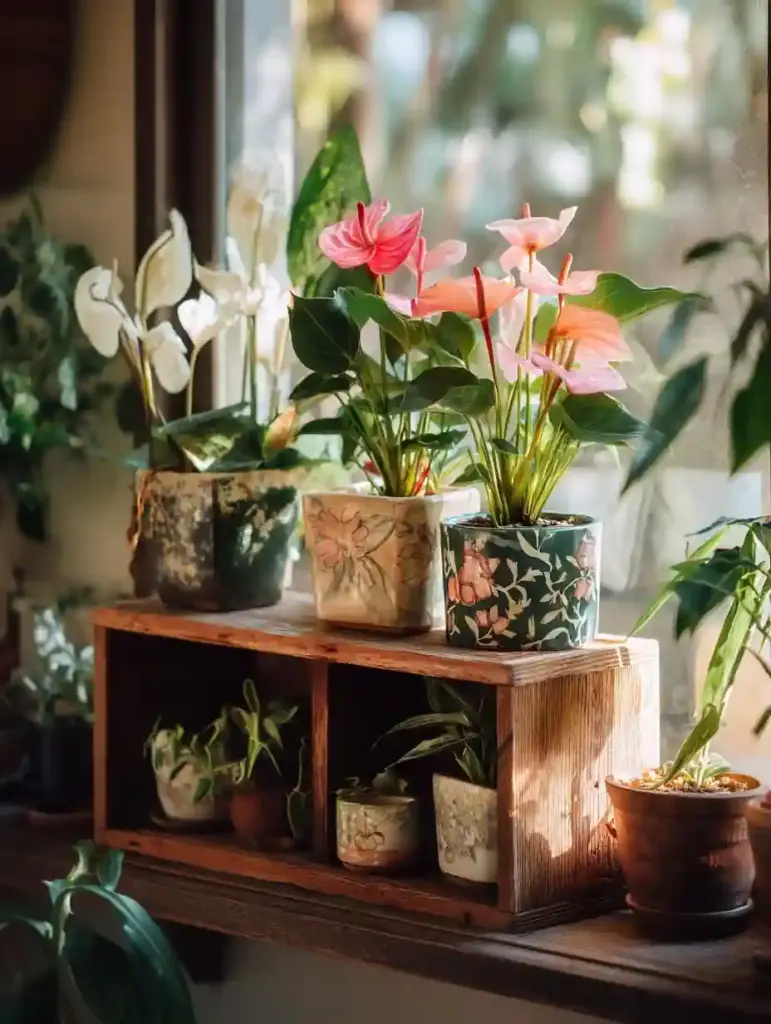
Successful anthurium care starts with understanding what this tropical houseplant really needs—and luckily, those needs are pretty straightforward. With a bit of consistency and the right setup, your flamingo plant can stay healthy and blooming all year long.
☀️ Light Requirements
Anthuriums thrive in bright, indirect light. Direct sunlight can scorch the leaves, while too little light can prevent flowering. A spot near an east- or north-facing window is ideal. If leaves begin to look pale or flowers fade quickly, your plant likely needs more light—but never direct rays.
✅ Pro Tip: Rotate your plant every few weeks to ensure even growth and prevent leaning.
🌱 Soil Mix
These plants prefer a light, chunky, and well-draining soil. A good mix includes peat moss, orchid bark, perlite, and regular potting soil. Avoid compact or soggy soils—too much moisture around the roots invites rot.
DIY Anthurium Mix:
- 1 part peat moss
- 1 part orchid bark
- 1 part perlite
- 1 part indoor potting mix
💦 Watering Tips
Overwatering is the most common mistake. Let the top 1–2 inches of soil dry out before watering. Stick your finger into the soil or use a moisture meter to check. Water thoroughly until it drains out of the bottom, but never let the plant sit in standing water.
🚫 Warning: Constantly soggy soil can lead to root rot—one of the biggest killers of anthuriums.
🌡️ Temperature and Humidity
Ideal temps are between 65°F and 80°F (18°C–27°C). They dislike cold drafts, so keep them away from open windows or air conditioners. As tropical plants, they love humidity. Aim for 60% or higher.
Ways to increase humidity:
- Use a pebble tray with water
- Group plants together
- Run a room humidifier
- Lightly mist the leaves (avoid soaking)
🌿 Fertilizing Schedule
Feed your anthurium every 6–8 weeks during spring and summer with a balanced, water-soluble fertilizer (like 20-20-20) diluted to half strength. Too much fertilizer can burn the roots, so err on the side of caution.
Quick Checklist for Anthurium Care Success:
- ✅ Bright, indirect light
- ✅ Well-draining, airy soil
- ✅ Allow soil to dry slightly before watering
- ✅ Warm temps, high humidity
- ✅ Occasional feeding during growing season
Get these five things right, and your flamingo flower will reward you with lush leaves and long-lasting color.
Flamingo Plant Common Pests and Diseases
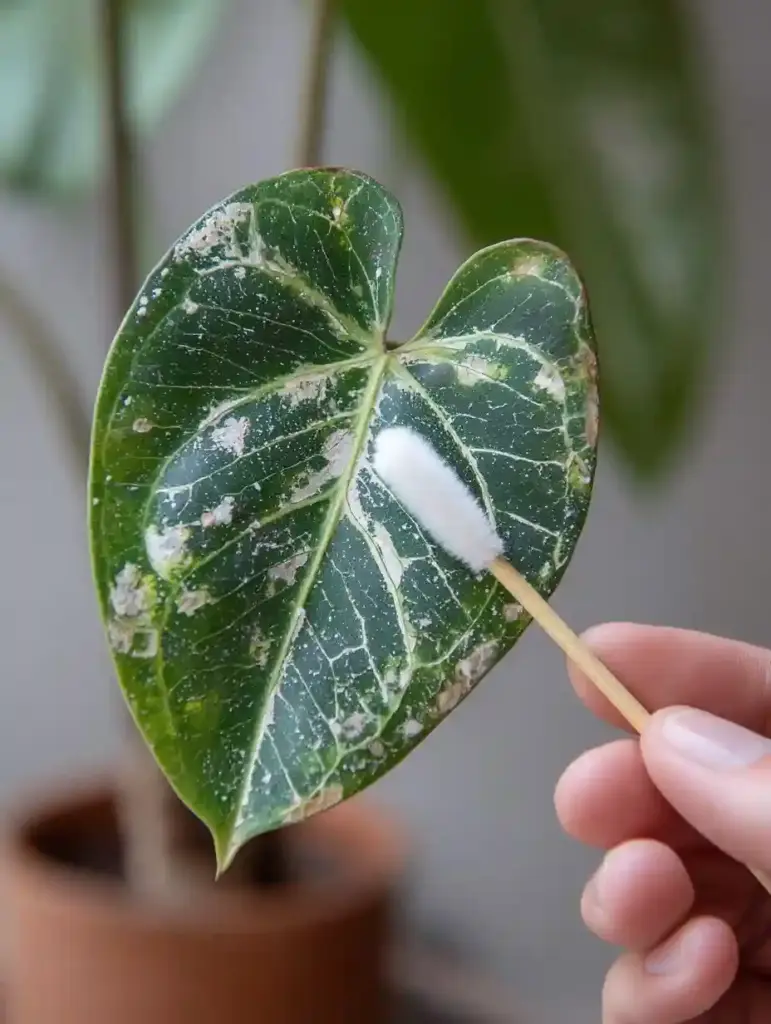
Even with the best anthurium care, your flamingo plant may encounter a few pests or diseases. The good news? Most of these issues are easy to manage—especially when caught early.
🐛 Common Pests
1. Spider Mites
These tiny, sap-sucking bugs create fine webbing on leaves and cause yellowing or stippling. They thrive in dry conditions.
Fix: Increase humidity and wipe leaves with a damp cloth. Neem oil or insecticidal soap works well for infestations.
2. Mealybugs
White, cotton-like clumps near leaf joints are a sign of mealybugs. They feed on plant juices, weakening your anthurium.
Fix: Dab them with rubbing alcohol on a cotton swab, then rinse the plant gently. Repeat as needed.
3. Aphids
These small, pear-shaped insects gather on new growth, causing curling or distortion of leaves.
Fix: Spray with a strong stream of water or use insecticidal soap. Ladybugs also love to eat aphids if you’re gardening organically.
🦠 Common Diseases
✅ Root Rot
Usually caused by overwatering or poor drainage. Symptoms include mushy roots, yellowing leaves, and a foul smell.
Fix: Remove the plant, trim affected roots, and repot in fresh, well-draining soil. Adjust your watering habits to let soil dry slightly between waterings.
✅ Bacterial Blight
Look for soft, dark, water-soaked spots on leaves. This spreads fast in humid, poorly ventilated areas.
Fix: Remove affected leaves immediately. Avoid misting directly onto leaves and ensure proper air circulation.
✅ Fungal Issues (e.g., Anthracnose)
This appears as brown or black spots on leaves, often with a yellow halo.
Fix: Prune infected leaves and reduce leaf wetness. A copper-based fungicide can be used if needed.
🧼 Preventative Care Tips
- Inspect regularly: Catch pests and diseases early.
- Clean tools and pots: Avoid cross-contamination.
- Avoid overwatering: It’s the #1 cause of disease.
- Keep humidity balanced: Too high invites mold; too low attracts pests.
Staying on top of these basics will help you prevent most problems and keep your anthurium looking its best.
Propagating Your Anthurium
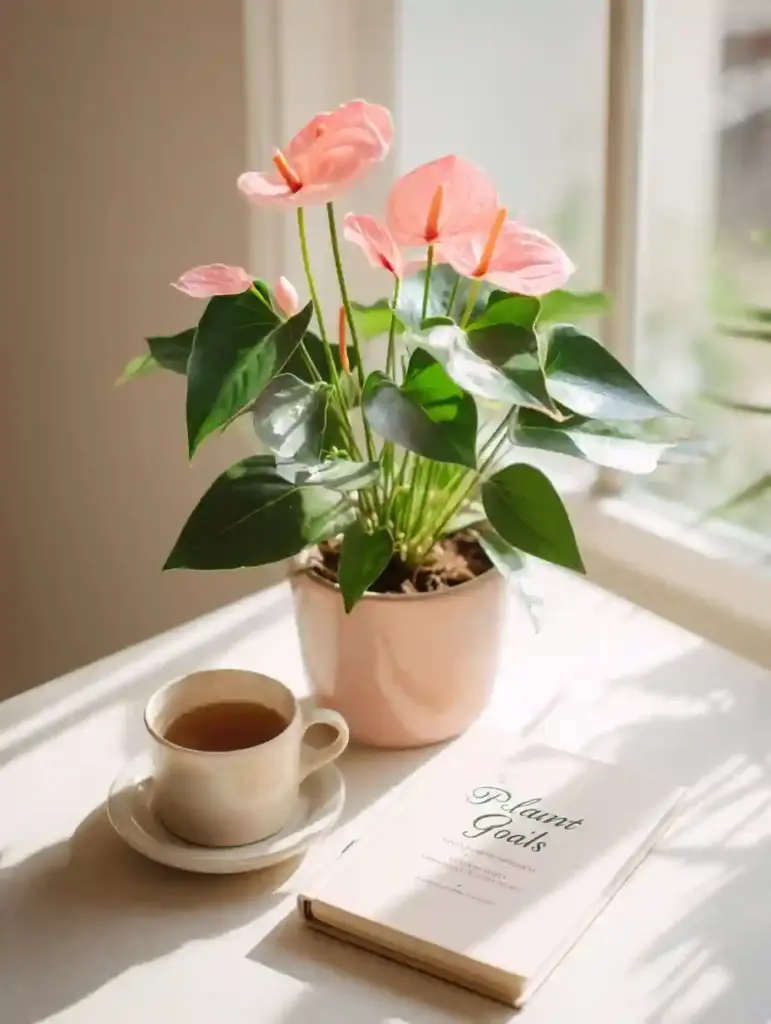
Propagating your flamingo plant is a rewarding way to expand your collection—or share the love with friends. With proper anthurium care, propagation is simple and effective, especially using stem cuttings or division.
✂️ Method 1: Stem Cuttings
Stem cuttings are the most beginner-friendly method. Here’s how to do it:
- Choose a healthy stem with at least one node (a bump where leaves grow).
- Cut below the node using clean, sharp scissors.
- Place the cutting in:
- Water: Submerge the node and change the water every few days. Roots should develop in 2–4 weeks.
- Soil: Dip the end in rooting hormone (optional) and plant in moist, well-draining potting mix.
🌿 Keep the new cutting in a warm, humid spot with bright, indirect light.
🌱 Method 2: Division
If your anthurium has multiple stems or offshoots, it’s a perfect candidate for division.
- Gently remove the plant from its pot.
- Separate the root ball into sections—each with roots and leaves.
- Repot each section in fresh soil.
This method is best done during the growing season (spring or early summer) to encourage quick recovery.
🌾 Method 3: Seeds (Advanced)
Seed propagation is rarely used because it takes longer and requires patience.
- Seeds must be fresh and sown in a sterile, moist medium.
- Keep them warm and humid until germination—often several weeks.
🧪 Propagation Tips
- Always sterilize tools to prevent disease.
- Provide consistent warmth and humidity.
- Don’t rush—new growth can take time.
With a little patience, you’ll have healthy baby anthuriums ready to thrive in their new homes.
Anthurium Care: How to Repot an Anthurium

Repotting is a key part of anthurium care, especially when your plant outgrows its container or needs a soil refresh. Done right, repotting gives your flamingo flower more room to grow and keeps roots healthy and strong.
🪴 When to Repot
Repot every 1–2 years, or when you notice:
- Roots circling the bottom or poking through drainage holes
- Soil drying out too quickly or staying soggy
- Slowed growth or fewer blooms
Spring or early summer is the best time to repot, as your plant will be in active growth.
🔁 Step-by-Step: How to Repot an Anthurium
1. Choose the Right Pot
Pick a container that’s 1–2 inches wider than the current one. It must have drainage holes to prevent root rot.
2. Prepare the Soil
Use a chunky, well-draining mix such as:
- 1 part orchid bark
- 1 part peat moss
- 1 part perlite
- 1 part potting soil
This ensures moisture retention without waterlogging the roots.
3. Remove the Plant
Gently loosen the plant from its pot. Support the base and tap around the pot’s sides to release the root ball.
4. Trim and Inspect Roots
Look for any brown, mushy roots and snip them off with clean scissors. Healthy roots should be firm and white.
5. Replant
Add a layer of soil mix to the new pot. Center your anthurium, then fill in around the roots. Leave about an inch of space from the top of the pot to the soil line.
6. Water Thoroughly
Give your plant a deep drink to help settle the soil and reduce transplant shock. Drain any excess water.
🧼 Post-Repotting Care
- Keep in bright, indirect light
- Avoid fertilizing for 4–6 weeks while the plant recovers
- Mist lightly to maintain humidity
With the right care, your newly repotted anthurium will bounce back and continue to thrive.
Final Thoughts About Growing Flamingo Flower
With the right approach to anthurium care, your flamingo flower can become a long-term companion in your indoor garden. Its bold, tropical charm and resilience make it a standout houseplant—even for those who don’t consider themselves “plant people.”
Remember, this plant thrives when given a balance of humidity, warmth, and filtered light. It rewards patience with stunning, long-lasting blooms and vibrant foliage that brightens up any space.
So whether you’re just getting started or adding another gem to your collection, the anthurium is a low-maintenance, high-impact plant that’s absolutely worth growing.
🌿 Love gardening inspiration? Follow me on Pinterest for bold plant ideas, tips, and seasonal color!
More Posts
